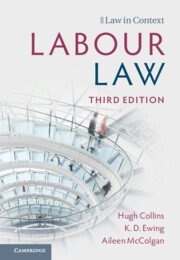Refine search
Actions for selected content:
607 results
Chapter 1 - Introduction
-
- Book:
- Historical Trauma
- Published online:
- 20 November 2025
- Print publication:
- 04 December 2025, pp 1-10
-
- Chapter
- Export citation

Historical Trauma
- Psychological Processes, Contexts, and Healing
-
- Published online:
- 20 November 2025
- Print publication:
- 04 December 2025
Chapter 2 - Twenty Questions about Employment Testing Bias and Unfairness in Australia
-
-
- Book:
- Global Perspectives on the Definition, Assessment, and Reduction of Bias and Unfairness in Employment Testing
- Published online:
- 04 November 2025
- Print publication:
- 20 November 2025, pp 44-64
-
- Chapter
- Export citation
Chapter 18 - Twenty Questions about Employment Testing Bias and Unfairness in South Africa
-
-
- Book:
- Global Perspectives on the Definition, Assessment, and Reduction of Bias and Unfairness in Employment Testing
- Published online:
- 04 November 2025
- Print publication:
- 20 November 2025, pp 365-389
-
- Chapter
- Export citation
10 - Exploitation in the Platform Age
- from Part III - Technology and Policy
-
-
- Book:
- Being Human in the Digital World
- Published online:
- 11 November 2025
- Print publication:
- 20 November 2025, pp 145-164
-
- Chapter
-
- You have access
- Open access
- HTML
- Export citation
Chapter 6 - Twenty Questions about Employment Testing Bias and Unfairness in France
-
-
- Book:
- Global Perspectives on the Definition, Assessment, and Reduction of Bias and Unfairness in Employment Testing
- Published online:
- 04 November 2025
- Print publication:
- 20 November 2025, pp 129-152
-
- Chapter
- Export citation
Chapter 14 - Twenty Questions about Employment Testing Bias and Unfairness in the Netherlands
-
-
- Book:
- Global Perspectives on the Definition, Assessment, and Reduction of Bias and Unfairness in Employment Testing
- Published online:
- 04 November 2025
- Print publication:
- 20 November 2025, pp 283-303
-
- Chapter
- Export citation
12 - Freedom of Association and the Right to Organise
- from Part IV - Collective Labour Rights
-
- Book:
- Labour Law
- Published online:
- 02 October 2025
- Print publication:
- 20 November 2025, pp 465-512
-
- Chapter
- Export citation
Chapter 22 - Twenty Questions about Employment Testing Bias and Unfairness in Türkiye
-
-
- Book:
- Global Perspectives on the Definition, Assessment, and Reduction of Bias and Unfairness in Employment Testing
- Published online:
- 04 November 2025
- Print publication:
- 20 November 2025, pp 439-460
-
- Chapter
- Export citation
Constitutionalization of the Principle of Gender Equality in the Legislation of Different Countries
-
- Journal:
- International Annals of Criminology , First View
- Published online by Cambridge University Press:
- 18 November 2025, pp. 1-21
-
- Article
- Export citation
Proving Discrimination: Addressing the Problem of Proof
-
- Journal:
- Federal Law Review / Volume 53 / 2025
- Published online by Cambridge University Press:
- 18 November 2025, e9
-
- Article
-
- You have access
- Open access
- HTML
- Export citation
Case 3.1 - White Privilege at the Work Opportunity Center
- from Part III - Case Studies in Mezzo-Level Practice
-
-
- Book:
- Critical Race Theory in Action
- Published online:
- 25 October 2025
- Print publication:
- 13 November 2025, pp 61-69
-
- Chapter
- Export citation

Wrongful Discrimination
-
- Published online:
- 11 November 2025
- Print publication:
- 31 December 2025
-
- Element
- Export citation
The Mobilizing Effects of Islamophobic Discrimination in Europe and North America
-
- Journal:
- Journal of Race, Ethnicity and Politics , First View
- Published online by Cambridge University Press:
- 10 November 2025, pp. 1-27
-
- Article
- Export citation
2 - Contemporary practice contexts: Enduring social forces
-
- Book:
- Engaging with Social Work
- Published online:
- 09 October 2025
- Print publication:
- 23 October 2025, pp 29-67
-
- Chapter
- Export citation
7 - Use Case 4: Employment Monitoring
-
- Book:
- A Datafied Mind
- Published online:
- 27 September 2025
- Print publication:
- 09 October 2025, pp 158-189
-
- Chapter
- Export citation

Labour Law
-
- Published online:
- 02 October 2025
- Print publication:
- 20 November 2025
-
- Textbook
- Export citation
Documenting the profession: Recording historic access and retention issues for women in UK archaeology
-
- Journal:
- Archaeological Dialogues / Volume 31 / Issue 1 / June 2024
- Published online by Cambridge University Press:
- 26 September 2025, pp. 76-100
-
- Article
-
- You have access
- Open access
- HTML
- Export citation
Rejection, Re-victimization and Human Rights Violations of Female Survivors of Boko Haram’s Sexual Violence in Nigeria: Legal Analysis
-
- Journal:
- Journal of African Law , First View
- Published online by Cambridge University Press:
- 26 September 2025, pp. 1-19
-
- Article
-
- You have access
- Open access
- HTML
- Export citation
Chapter 16 - Decolonizing Research and Teaching in EU Law
- from Part IV - Futures
-
-
- Book:
- Colonialism and the EU Legal Order
- Published online:
- 14 October 2025
- Print publication:
- 18 September 2025, pp 359-372
-
- Chapter
-
- You have access
- Open access
- HTML
- Export citation
